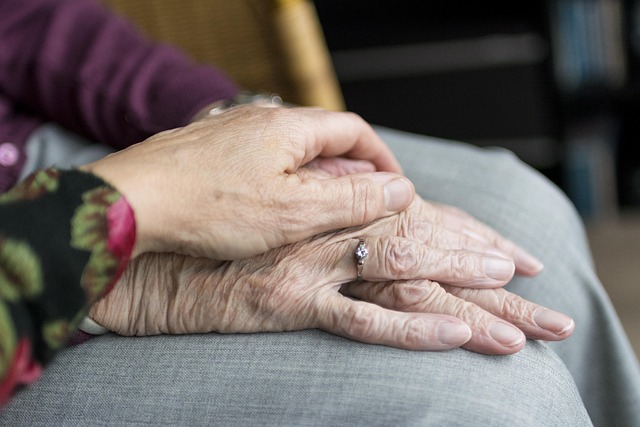
How Relational Openness Strengthens Communication in Relationships
In any partnership, the quality of communication often dictates the strength of the bond. While many people focus on the mechanics of conversation—timing, tone, and clarity—one foundational element frequently goes unnoticed: relational openness. This subtle yet powerful mindset encourages partners to share their inner worlds, admit uncertainty, and invite mutual growth.
Relational openness is not about perfection; it is a deliberate choice to remain receptive to emotions, thoughts, and intentions that might otherwise stay buried.
When partners practice relational openness, they lay the groundwork for conversations that are both honest and compassionate, turning routine exchanges into opportunities for deepening understanding.
What Is Relational Openness?
Imagine a couple where each partner feels safe to admit a mistake without fear of judgment. That sense of safety is the bedrock of relational openness, and it nurtures a willingness to explore each other’s vulnerability.
Practicing relational openness also means acknowledging that disagreement is natural. Rather than avoiding conflict, partners use it as a platform to test assumptions, refine beliefs, and align expectations.
The Science Behind Openness
Research in social psychology shows that couples who communicate with openness experience lower levels of resentment and higher satisfaction scores. The data suggest that emotional transparency, when paired with empathy, creates a feedback loop that reinforces trust.
Beyond the bedroom, relational openness has practical implications for everyday life. When partners discuss finances, future plans, or household responsibilities openly, misunderstandings that could snowball into resentment are prevented.
Practical Ways to Cultivate Relational Openness
One of the most powerful ways to cultivate relational openness is through intentional vulnerability practices. This could involve sharing a fear that keeps you up at night, or admitting that you’re struggling with a particular aspect of your identity.
Another technique is the practice of reflective listening. When one partner speaks, the other repeats the core idea back, confirming understanding before offering feedback. This simple ritual ensures that each person feels heard.
But no method is foolproof; obstacles often arise from deep‑seeded habits, past trauma, or mismatched expectations. Recognizing these barriers is the first step toward addressing them.
Common pitfalls include defensive reactions, selective listening, and emotional withdrawal. These responses can erode the very openness that couples wish to foster.
Overcoming these challenges requires intentionality. For instance, practicing self‑checklists—pausing before replying, labeling emotions, and asking clarifying questions—can transform a defensive moment into an opening.
Another key is consistency. Relational openness is a habit, not a one‑off conversation. Setting regular times to touch base—whether it’s a weekly check‑in or a nightly reflection—helps keep the dialogue alive.
When partners maintain a culture of openness, the benefits ripple outward. Friends, family, and even colleagues often notice a more confident, communicative presence. This external affirmation reinforces the internal growth.
At its core, relational openness is a commitment to growth together. It invites each partner to see the other as a partner in exploration, not a judge or obstacle.
As couples cultivate this mindset, they often discover that their relationship becomes more resilient. Challenges are met with curiosity rather than fear, and differences are seen as opportunities for expansion.
The journey to relational openness is ongoing, and each small act of transparency adds up. By valuing honesty, practicing empathy, and embracing vulnerability, partners can transform ordinary conversations into profound moments of connection.
Beyond the Couple: Wider Impact
In summary, relational openness is not a one‑time fix but a lifelong practice that strengthens the fabric of any partnership. The more you open your heart, the more the conversation flows, and the deeper the bond becomes.
So next time a disagreement arises, pause, breathe, and ask yourself: How can I invite my partner into this space with honesty and curiosity? The answer may be simpler than we think—just an open mind and an open heart.
Remember, relational openness is a gift you give both to yourself and your partner. The more you practice it, the richer the dialogue, and the more resilient the partnership becomes over time.
Tools for Sustaining Openness
A useful tool for sustaining relational openness is the practice of written reflection. Journaling together—or maintaining a shared digital log—allows partners to articulate thoughts that might be too raw to voice immediately. Over time, these entries become a living archive of growth, offering both partners insight into evolving patterns and shared commitments.
Another dimension of relational openness is the conscious choice to celebrate small wins. When partners acknowledge progress—whether it’s a moment of genuine listening or a shared joke after a tough conversation—it reinforces the positive feedback loop that encourages continued openness.
Mindfulness and Boundaries
Consider integrating mindfulness into your routine. Simple breathing exercises, body scans, or guided meditations can help partners reduce reactivity and create space for authentic expression. When the nervous system is calm, the brain is more open to new information and more willing to integrate differing perspectives.
It is also essential to set boundaries around communication. While openness thrives on vulnerability, it does not mean sharing every thought in every moment. Defining safe zones—such as not discussing sensitive topics during stressful times—helps maintain a balanced exchange.
Reflecting on Progress
Finally, remember that relational openness is a journey of mutual discovery. There will be missteps, uncomfortable silences, and moments of doubt. Treat each of these as learning opportunities, and keep the dialogue open—asking, listening, and evolving together.
Deepening the Dialogue
For couples seeking deeper relational openness, regular check‑ins that focus on emotions rather than facts can be transformative. During these sessions, partners might share feelings about the week, acknowledge unmet needs, and set intentions for how to support each other moving forward. The key is to keep the focus on the shared emotional landscape, not on proving who is right or wrong.
One practical exercise is the “mirror‑talk” technique, where each partner repeats back what they heard before adding their own perspective. This simple act ensures that misunderstandings are caught early and that each voice feels validated. Over time, the mirror‑talk becomes a subtle cue that the conversation is safe and worth investing in.
Celebrating Growth
Lastly, celebrate the evolution of your communication. As you progress, notice how the language you use shifts from defensiveness to curiosity, from blame to appreciation. Highlight these milestones in a shared journal or a small ritual, such as raising a toast to your growing partnership. This recognition reinforces the habit of openness and encourages continuous growth.
In the end, relational openness is a living practice that evolves with you. By weaving empathy, curiosity, and consistent reflection into daily life, you create a dialogue that not only survives challenges but thrives on them.


